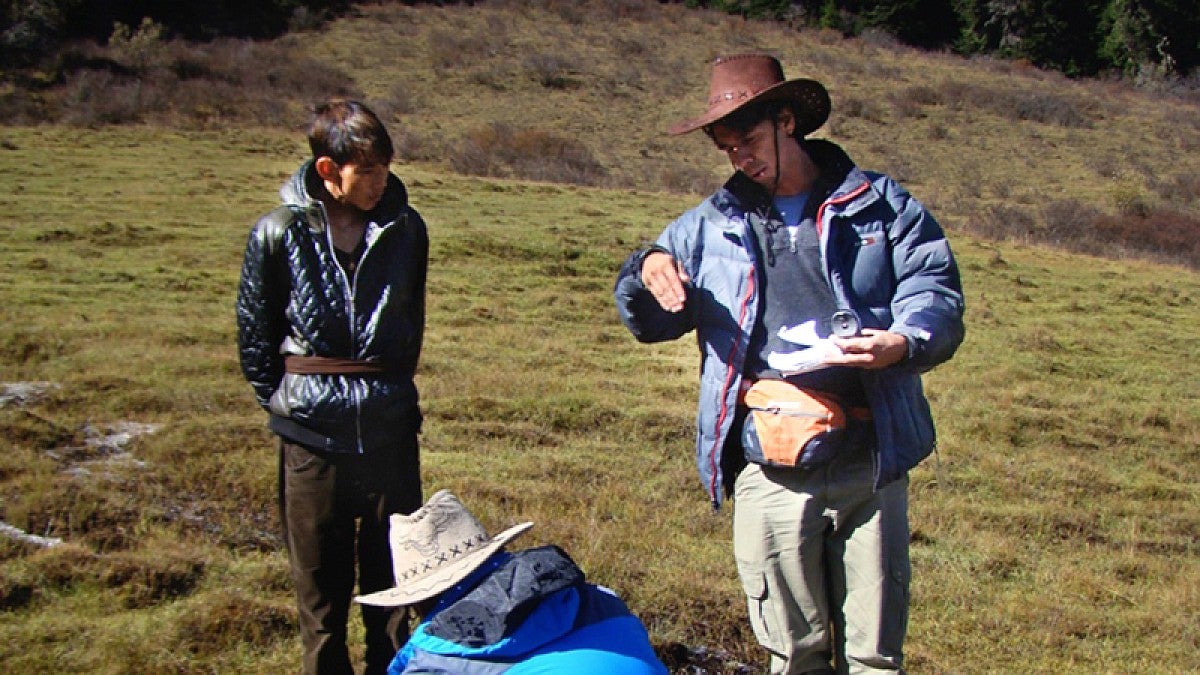Word of mouth from nomadic herders led Lucas Silva into Tibetan forests and grasslands. What his team found was startling: Rapid forest growth in tune with what scientists had been expecting — but not yet seeing — from climatic changes triggered by rising levels of carbon dioxide.
Actual scientific findings to date have turned up declining growths in many forests in the face of a warming climate. Such had also been the case for Silva, who joined the UO's Environmental Studies Program and Department of Geography in August.
On the eastern Tibetan Plateau, in an area where it was thought that "climatically induced ecological thresholds had not yet been crossed," Silva's team found that the increasing availability of soil nutrients and water from thawing permafrost is stimulating the chemistry of the wood in a species of fir trees.
"Our results confirmed the reports of local herders and showed a recent increase in tree growth that has been unprecedented since the year 1760," Silva said. "These result demonstrate that under a specific set of conditions, forests can respond positively to human-induced changes in climate."
The findings were published in Science Advances, an online, open-access publication of the American Association for the Advancement of Science.
Nomads had reported their observations to study co-author Geng Sun of China's Chengdu Institute of Biology in Sichuan, China. The research team traveled to the region in eastern Tibet, where they found old-growth forests, smaller patches of trees and trees isolated on the perimeter of the forests.
"We wanted to take a long term view of changes in tree growth across this gradient," Silva said. "To do so, we combined tree-ring measurements with laboratory analyses to look for changes in growth as well as chemical signals of climatic change."
Those techniques provided a window on the history of the area's tree growth. Dramatic increases in growth have coincided with pulses of tree establishment just outside of the forest range but apparently not yet occurring on a broader regional scale, he said. Growth was rapid between the 1930s and 1960s, but even more accelerated in the last three decades.
Research involving plants grown in controlled laboratory and greenhouse conditions have shown that rising carbon dioxide levels can speed plant growth, but field studies have shown that carbon dioxide-induced growth could not counteract the negative effects of rising temperatures and drought stress in many forest ecosystems.
The new findings, the researchers said, suggest that studying the synergy of soil-plant-atmosphere interactions might be the key to understanding the past and predicting future changes in forest productivity and distribution.
"Our findings could have important implications for the conservation and management of many different species," Silva said. "However, it is important to note that we sampled a very small area where forests and grasslands coexist. A comprehensive survey of changes in plant diversity throughout the region has yet to be performed."
Other co-authors on the paper were William Horwath and Xia Zhu-Barker of the University of California, Davis, Ning Wu from Chengdu Institute of Biology in China and Qianlong Liang from Sichuan University in China.
Silva earned his doctorate in 2011 from the University of Guelph in Canada. He received a grant to conduct research in Tibet and began working with Chinese collaborators during a postdoctoral stint at the University of California, Davis, where he eventually landed on the faculty in 2013.
—By Jim Barlow, University Communications


